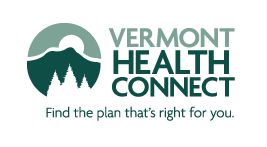AHS is committed to embedding a Results-Based Accountability™ (RBA) approach into how we work with communities to improve quality of life for Vermonters, and how we manage and learn from our programs and services to most effectively meet the needs of those we work with – ensuring that children, adults, and families are “better off” for our work.
What is Results-Based Accountability?
RBA is a method for learning, planning, and taking action used across organizations to improve the quality of life for whole communities, and to improve the performance of specific programs, agencies, and service systems. It starts with the ends: what do we want? and works toward the means: what will it take to get there? Mark Friedman developed RBA which is detailed in his book Trying Hard is Not Good Enough. RBA is being used across the USA, and internationally to make measurable impact.
Results-Based Accountability describes two levels of accountability in which we can work to improve outcomes: Population Accountability and Performance Accountability.
Population Accountability
Outcome / Result: Desired condition of well-being for a whole population.
Indicator: Measure that helps quantify the achievement of an outcome.
Performance Accountability
Performance Measure: Measure of how well a program, agency of service system is working. Performances measures answer one of these three questions:
- How much are we doing?
- How well are we doing it?
- Is anyone better off?
To improve outcomes of well-being for a whole population in a geographic area, many partners need to share accountability for sharing information and ideas, learning from what works, and implementing strategies that work. This shared accountability is called Population Accountability. It requires many partners working together to establish the outcomes we want to achieve, the indicators we will use to measure progress, and the strategies we implement to improve quality of life for all children, adults, and families in communities.
Performance Accountability is about the role that individual programs, agencies, and service systems play as the means toward those ends. Unlike Population Accountability where accountability is shared by many partners, Performance Accountability is about the role of managers, policy-makers, and funders to improve the performance of programs, the impact of policy, and the effectiveness of service reforms to benefit the people they serve. Performance measures help managers understand “how much” is being done, “how well” it is being done, and to what extent clients are “better off.”

Photo Caption: Graphic representation of RBA. In a similar style as an Iceberg chart. Top: Globe- Outcome of well-being. This branches to two Population indicator icons. A dotted red line divides the top indicators from the drivers and solutions. On the left it branches two Legislative Policy and Program as mechanism for change. On the right it branches to three and says New Initiative, System Reform, and Program. There is a parenthesis around the bottom half that calls our Performance Measures and the three questions.
Turn the Curve
There are seven common sense questions that groups of partners can ask to “turn the curve” for population well-being. And a similar set of seven questions and that managers and staff can ask to “turn the curve” in the performance of their programs. These questions start with the ends we are trying to achieve and work backward toward identifying strategies to get there.
Turning the Curve with Partners for Whole Communities:
- What are the quality-of-life conditions we want for people in VT?
- What would these conditions look like if we could see them?
- How can we measure these conditions?
- How are we doing on the most important of those conditions?
- Who are the partners that have a role to play in doing better?
- What works to do better? (Including no-cost and low-cost ideas)
- What do we propose to do?
Turning the Curve on Program Performance for a Client Population:
- Who are our customers?
- How can we measure if our customers are better off?
- How can we measure if we are delivering service well?
- How are we doing on the most important of those conditions?
- Who are the partners that have a role to play in doing better?
- What works to do better? (Including no-cost and low-cost ideas)
- What do we propose to do?
Take a look at Healthy Vermonters 2030 as an example of using population indicators to understand how Vermonters are doing.
Review our Performance Scorecards to see more information about the performance of AHS programs and services across departments.



